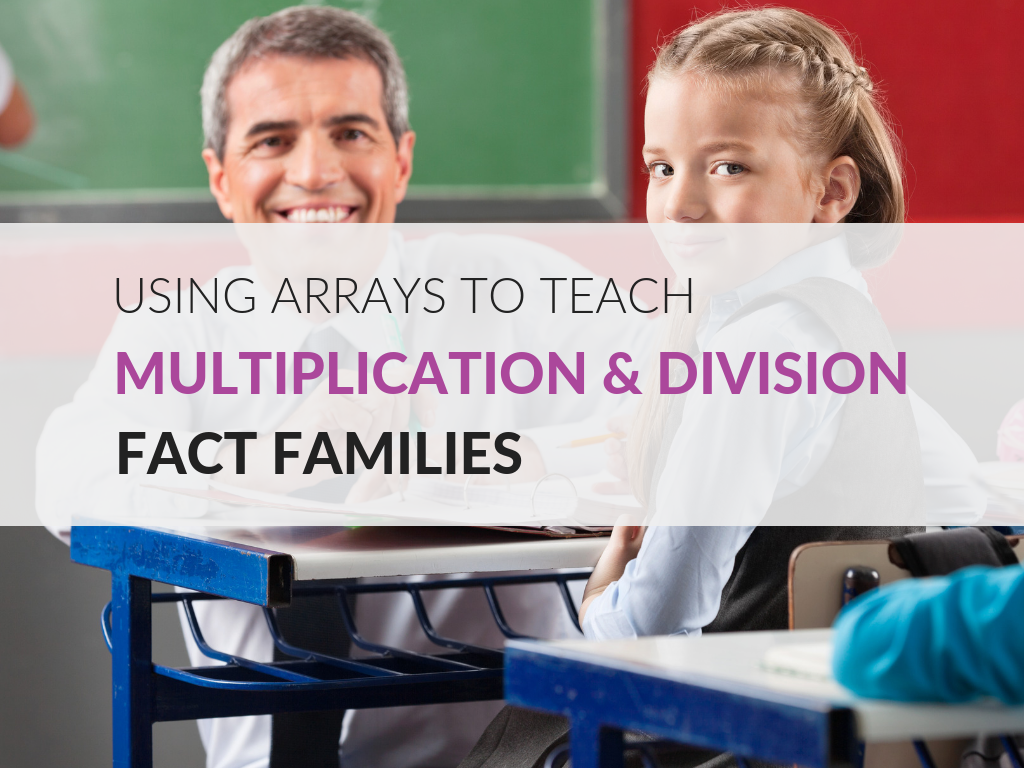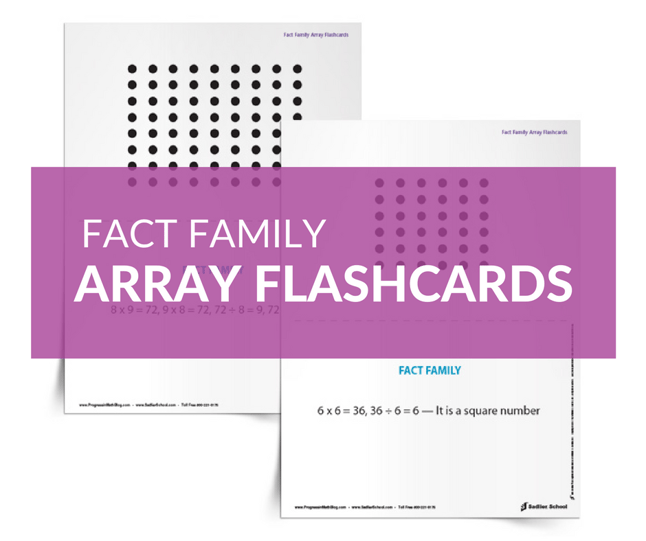January 14, 2025 3-5-operations-and-algebraic-thinking
Practice Multiplication and Division Fact Families Using Arrays
By: Jeff Todd
Making sure that every child is solid in his or her multiplication and division facts is critical to students’ success in their later coursework and in life itself. Though I have seen many activities in my time as a teacher, I haven’t seen any that focus on using arrays to help students learn multiplication and division fact families. In this article, you'll discover why arrays and fact families for multiplication and division are helpful for all students and find a free printable download to start using in your classroom today!

Arrays are visual representations of multiplication, and students should have started using them in Grade 2, as they build up to 5 x 5 arrays.
Students add and use skip counting in Grade 2, but by Grade 3 they are beginning to use arrays to explain multiplication problems and are learning their multiplication facts.
Students in the Grades 3 and 4 are learning about the relationship between multiplication and division, and by Grade 4 are decomposing numbers within 100.
Fact Family Array Flashcards Activity
I came up with this activity so that students could combine the visual component of arrays with the conceptual component of fact families.
I have noticed, especially among my struggling students, that the idea of fact families is weak. By strengthening their knowledge of fact families of related multiplication and division problems (as well as related addition and subtraction facts) their memorization of basic facts and their ability to comprehend and represent real-life (i.e., word) problems improves.
Download the activity for use as partner work, a center activity, or for practice for extra for students who are falling behind. The download consists of 49 pages that you can print out. Each page has an array and the fact family associated with that array. By folding the paper in half and stapling it, you create flashcards for the students to use.
There are many ways that you can incorporate this activity in your class. If students are working with partners, one student looks at the array and reads out the four fact families, while the other student verifies that fact family by reading the back of the card. They can take turns quizzing each other. This activity is also great to have on-hand for when students work in math centers or stations.
Finally, for students who are struggling, print off a set of flashcards that they can take home and use for extra practice with their family members.
How it works..
To begin using this activity in your classroom, first print and assemble the flashcards.
You can print out just the first twenty pages for earlier in the year and gradually add pages as the year progresses and students expand their fact fluency.
An example of what a flash card would look like once folded is:
And on the other side, the fact family would be:
3 x 4 = 12, 4 x 3 = 12, 12 ÷ 3 = 4, 12 ÷ 4 = 3
NUMBERS WITH MORE THAN ONE FACT FAMILY
Many numbers have more than one fact family. For instance, here is another flashcard for the number 12:
The fact family for this card is:
2 x 6 = 12, 6 x 2 = 12, 12 ÷ 2 = 6, 12 ÷ 6 = 2
Composite numbers can always be represented by at least two differently composed arrays.
SQUARE ARRAYS AND SQUARE NUMBERS
One thing that always comes up in class and presents a great learning opportunity is that certain cards will only have two facts. Most cards have four facts, but arrays that are squares only have two facts. For example, the array below is a four-by-four array,
The fact family has only number facts: 4 x 4 = 16, 16 ÷ 4 = 4
This presents an opportunity to have students connect the idea of a square shape with square numbers (1, 4, 9, 16, 25, 36, 49, 64, 81, and 100 in this card set).
In Summary
I hope that you find focusing on fact families is helpful for students in developing their numeracy skills, as well as for their conceptual development of the relationship between multiplication and division. I have found that fact families and arrays provide a solid foundation for representing word problems and for further work in the use of array and area models to solve problems.
Download the activity today and use it for partner work, as a station, or to send home with students for extra practice.




